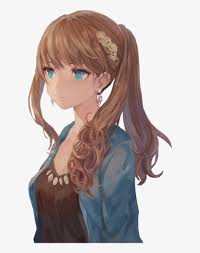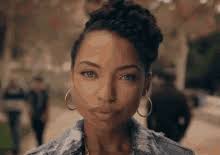How much of Zimbabwe’s population is white? The white population of Southern Rhodesia, or just Rhodesia from 1965, reached a peak of about 300,000 in 1975–76, representing around 8% of the population. Emigration after independence as Zimbabwe in 1980 left the white population at around 220,000 in 1980, 70,000 in 2000, and 30,000 in 2012.
What is the racial makeup of Zimbabwe? Bantu-speaking ethnic groups account for 98% of Zimbabwe’s population. The largest group is the Shona, comprising 70%, followed by the Ndebele at 20%. The Ndebele are descendants of the Zulu migrations during the 19th century and the tribes with which they intermarried.
When did whites come to Zimbabwe? During the 1880s and 1890s, the British South Africa Company initiated colonisation by Whites, backed by a royal charter from Queen Victoria: company rule over the country began in 1890, when the Pioneer Column marched to Mashonaland, founded Fort Salisbury and settled in the area.
What percent of South Africa is white? Whites make up 9.6% of the total population. The percentage of all White households that are made up of individuals is 19.1%. The average White household size is 3.05 members.
How much of Zimbabwe’s population is white? – Additional Questions
What’s the largest race in the world?
The world’s largest ethnic group is Han Chinese, with Mandarin being the world’s most spoken language in terms of native speakers.
How much of Africa’s population is white?
Black South Africans make up around 81% of the total, coloured people 9%, whites 8% and Indians 3%. The country has the fourth-largest population in Africa – after Nigeria, Ethiopia and Egypt – and the 25th-largest in the world.
What is the racial makeup of South Africa?
Statistics South Africa asks people to describe themselves in the census in terms of five racial population groups. The 2011 census figures for these categories were Black South African at 76.4%, White South African at 9.1%, Coloured South African at 8.9%, Indian South African at 2.5%, and Other/Unspecified at 0.5%.
What percentage of South Africa is white 2021?
As of 2021, South Africa’s population increased and counted approximately 60 million inhabitants in total, of which the majority (roughly 48.6 million) were Black Africans.
Total population of South Africa in 2021, by ethnic groups (in 1,000s)
| Characteristic |
Total population in thousands |
| White |
4,662 |
| Indian/Asian |
1,545 |
What ethnicity is South Africa?
Three-fourths of the population are black Africans, including the Zulu, Xhosa, Sotho, and Tswana; nearly all of the remainder are of European or mixed or South Asian descent.
How many whites live in South Africa?
The whites of South Africa (roughly 5.5 million people out of a total population of 40 million) are only now getting used to being a minority.
Are Boers white?
Two main white groups emigrated to South Africa: first the Boers came, mainly from Holland, later calling themselves Afrikaners.
Who was the first white person in South Africa?
The first white settlement in South Africa occurred on the Cape under the control of the Dutch East India company. The foothold established by Jan van Riebeck following his arrival with three ships on 6th April 1652 was usually taken in Afrikaner accounts to be the start of the ‘history’ of South Africa.
Is South Africa British or Dutch?
Increased European encroachment ultimately led to the colonisation and occupation of South Africa by the Dutch. The Cape Colony remained under Dutch rule until 1795 before it fell to the British Crown, before reverting back to Dutch Rule in 1803 and again to British occupation in 1806.
Where do Zulu originally come from?
The Zulu people are the largest ethnic group and nation in South Africa, with an estimated 10–12 million people, living mainly in the province of KwaZulu-Natal. They originated from Nguni communities who took part in the Bantu migrations over millennia.
Where do Xhosa originally come from?
Xhosa, formerly spelled Xosa, a group of mostly related peoples living primarily in Eastern Cape province, South Africa. They form part of the southern Nguni and speak mutually intelligible dialects of Xhosa, a Bantu language of the Niger-Congo family.
Is Zulu similar to Xhosa?
Although Xhosa and Zulu are similar enough to be considered dialects of one language, Xhosa and Zulu speakers consider them to be separate languages. The sound system of Xhosa contains three types of click sounds borrowed from the neighbouring Khoisan languages.
Who was in South Africa first?
The Khoisan were the first inhabitants of southern Africa and one of the earliest distinct groups of Homo sapiens, enduring centuries of gradual dispossession at the hands of every new wave of settlers, including the Bantu, whose descendants make up most of South Africa’s black population today.
Can Zulu understand Xhosa?
Because Xhosa and Zulu are both classed as Bantu languages, they are quite similar. Therefore, Xhosa and Zulu people frequently understand one another, even if they are each speaking their mother tongue. Xhosa has been grouped into several dialects.
Which African language is easiest to learn?
Swahili is said to be the easiest African language for an English speaker to learn. It is heavily influenced by Arabic and Indo-European languages such as Portuguese, German, English, and French. It’s one of the few sub-Saharan African languages that have no lexical tone, just as in English.
What language is closest to Zulu?
Nguni languages are unique among the Bantu family in the use of click sounds as consonants. These sounds were borrowed form the neighbouring Khoisan languages. The closest linguistic affiliation of Zulu is with Xhosa, the two languages being mutually intelligible to a great extent.
Why do xhosas cut their fingers?
An ancient Xhosa custom of amputating the joint of the little finger, or of the ring finger on babies is seen by many as an act of cruelty and torture. The Ingqithi custom is practiced by certain Xhosa speaking tribes and is common in the Tembus.


